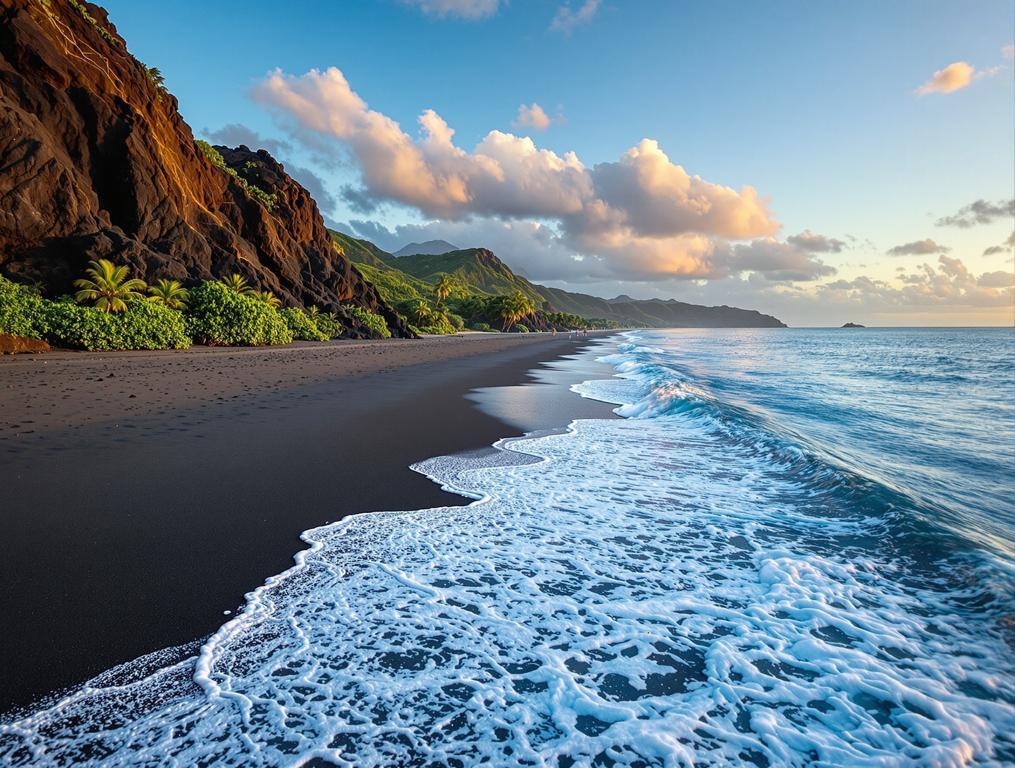The sand feels oddly cool beneath my feet as dawn breaks over Playa Jiquilillo. I’ve walked 3 kilometers of virtually empty shoreline, passing just two local fishermen mending nets. In this Nicaraguan coastal village of 4,100 residents, the morning air carries a mixture of salt and volcanic soil—a scent I’ve encountered nowhere else in Central America. The real miracle begins at my feet: tiny turtle tracks leading from a protected nest toward the Pacific’s gentle waves.
My wife Sarah stands transfixed, camera ready, as another olive ridley hatchling emerges. “This is what we missed in Costa Rica,” she whispers. “Too many tourists with selfie sticks.” She’s right—we’re experiencing nature’s masterpiece with just four other visitors on this entire stretch of beach.
The 90-Day Turtle Miracle: Why June is Perfect Timing
Jiquilillo sits at the edge of Central America’s largest wetlands, creating a perfect turtle nesting habitat that peaks between June and September. I’ve arrived during the golden window when olive ridley sea turtles begin their hatchling season, a spectacle that draws surprisingly few travelers despite its accessibility.
“We’re seeing 15-20 nests hatch weekly,” explains my guide from Rancho Esperanza, the village’s eco-hostel. The conservation program here began in 2009, gradually increasing turtle survival rates by over 70% through community-led protection efforts.
Watching the tiny creatures’ determined march toward the ocean feels like witnessing a miracle—each hatchling faces 1-in-1000 odds of reaching adulthood. I notice how much more intimate this experience is compared to Costa Rica’s Tortuguero, where crowds can gather 50-deep during peak season.
Nicaragua’s Answer to Costa Rica (With 70% Fewer Tourists)
While travelers flock to Costa Rica’s Nicoya Peninsula, paying $50-100 for guided turtle walks, Jiquilillo offers a similar experience for just $10. But the value extends beyond wildlife. Accommodation at Rancho Esperanza costs $15-25 per night, including hammocks with ocean views that would command triple the price across the border.
“People come for cheap surfing but stay for the community. Here, you learn the fisherman’s name, eat coconut bread from Wilson’s cart, and nobody’s trying to sell you anything. That kind of authenticity disappeared from Costa Rica years ago.”
The comparison to Costa Rica isn’t just about price. As I explore Jiquilillo’s ash-gray beach stretching 7 kilometers, I notice what’s missing: no beach vendors, no luxury resorts, no tour buses. Just small family-run comedores serving fresh ceviche for $4 a plate.
While travelers exploring Nicaragua’s world-class surf spots with 90% fewer tourists might find faster waves elsewhere, Jiquilillo offers something increasingly rare: beginners can rent boards for $11 daily and practice on uncrowded gentle breaks.
Beyond Turtles: Central America’s Largest Wetlands & Volcano Views
The morning after our turtle hatching experience, Sarah and I kayak through the Padre Ramos Nature Reserve’s mangroves. Unlike Colombia’s protected beaches that rival Bali without crowds, Jiquilillo combines coastal beauty with inland adventures.
Cosiguina Volcano looms in the distance, offering a 4-hour hike with views across three countries—Nicaragua, El Salvador, and Honduras. The volcano’s green crater lake contrasts dramatically with the Pacific blue below, creating what locals call “Dios y mar” (God and sea)—their metaphor for perfect natural balance.
Conservation efforts here rival those found in the Seychelles’ protected prehistoric palm forests, with community patrols protecting both turtles and the 200+ bird species inhabiting the wetlands.
How to Experience Jiquilillo Before Mass Tourism Arrives
Reach Jiquilillo by taking a $2 chicken bus from Chinandega, running five times daily. For comfort, sit on the left side to avoid the morning sun. Alternatively, private shuttles from León cost $25 per person and take 2.5 hours.
Time your visit for early June through September for turtle hatching, though surfers might prefer December through March for consistent waves. Unlike Thailand’s hidden temples and secret beaches, Jiquilillo doesn’t require special insider knowledge—just timing your day around sunrise turtle releases and sunset coconut bread.
As Emma, my daughter, carefully places a tiny turtle on sand near the waterline, I’m reminded why authentic experiences matter. The villagers here have a saying—”pequeño pero poderoso” (small but powerful)—referring to both the determined hatchlings and their own resilient community. Standing on this quiet shore watching nature’s miracle unfold, I realize Jiquilillo offers something increasingly precious: not just a destination, but a moment of genuine connection with both wildlife and local culture.
